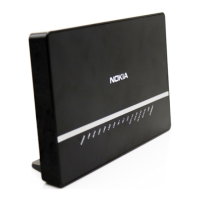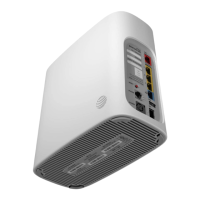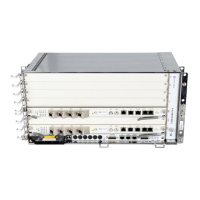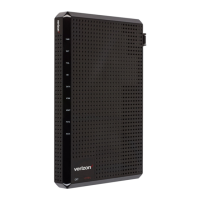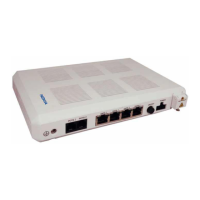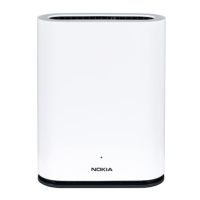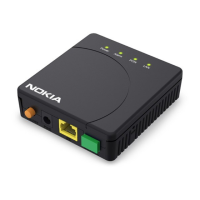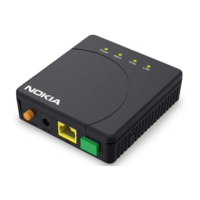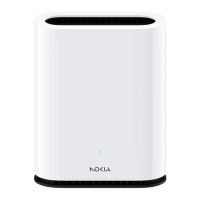Connecting to Network Interfaces
IP390 Security Platform Installation Guide 29
Connecting to Network Interfaces
Connect at least one network interface to use as the Nokia Network Voyager system
management interface. This interface is configured during the system startup procedure, as
described in Chapter 3, “Performing the Initial Configuration.”
You can also connect the remaining LAN interface cables at this point, although you are not
required to do so.
To connect Ethernet devices
Use a straight-through RJ-45 cable to connect to a 10-Mbps or 100-Mbps hub.
Use a crossover RJ-45 cable to connect directly to a host.
For details, see “Ethernet NIC Connectors and Cables” on page 38.
To connect copper Gigabit Ethernet devices
Use a straight-through or crossover RJ-45 cable to connect to a 10-Mbps, 100-Mbps, or
1000-Mbps hub or directly to a host.
Note
All Nokia copper Gigabit Ethernet NICs support cable auto-sensing. You can use a
straight-through or crossover cable to connect the NIC to a Gigabit Ethernet hub or
switch, or to connect directly to a host.
For details, see “Copper Gigabit Ethernet Connectors and Cables” on page 41.
To connect fiber-optic Gigabit Ethernet devices
Use a multi-mode, fiber-optic cable with an LC connector to connect to a 10-Mbps, 100-
Mbps, or 1000-Mbps hub or directly to a host. The destination end of the cable can be either
LC or SC, depending on the type of connector required for the destination Gigabit Ethernet
device. You can also use a half-duplex LC-to-LC cable to loop back the transmit port of an
interface to the receiver port.
For details, see “Fiber-Optic Gigabit Ethernet NIC Connectors and Cables” on page 44.
GND 5 4 7 GND
RxD 6 3 2 RxD
DSR 7 2 8 DCD
CTS 8 1 5 CTS
Auxiliary
Port (DTE)
RJ-45 to RJ-45 Rollover
Cable
RJ-45 to DB-25
Modem Adapter Modem
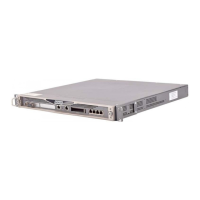
